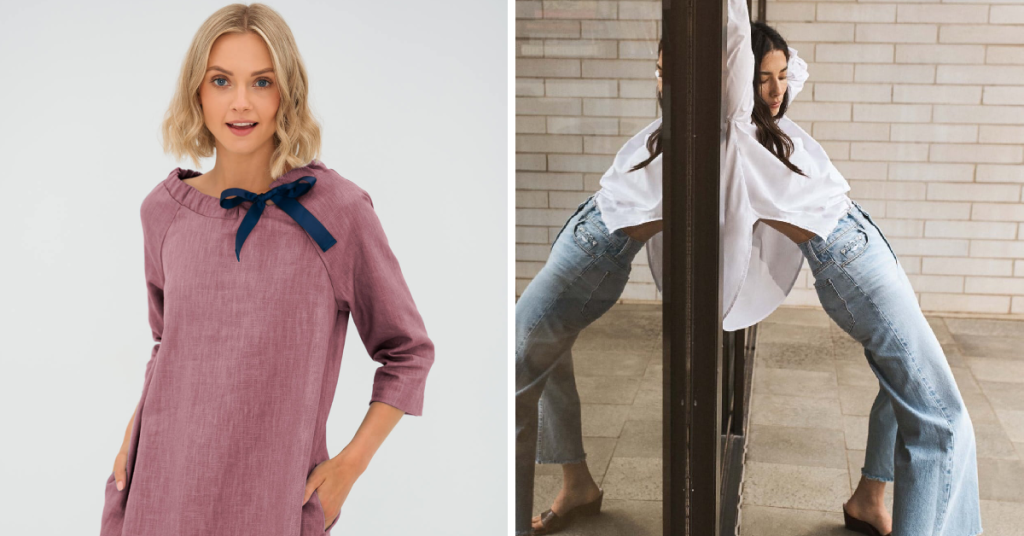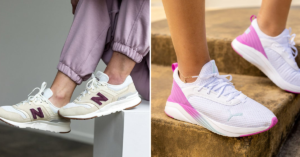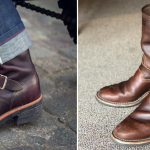When it comes to caring for your clothes, washing and drying them properly can make a big difference in their longevity. Always remember to separate your whites from colors to prevent any unwanted dye transfer. Before tossing your garments into the wash, be sure to zip up zippers, button up buttons, and turn items inside out to protect delicate fabrics.

When it’s time to dry your clothes, avoid using high heat settings as they can cause shrinkage and damage fibers. Opt for a lower heat setting or better yet, air-dry your clothes to help them last longer. Remember to reshape garments as needed before laying them flat to dry to maintain their original shape and prevent wrinkles.
Storing Your Sustainable Clothes Properly
After properly laundering your sustainable clothes, it’s crucial to store them correctly to maintain their quality and longevity. One key tip is to avoid cramming your clothes into tight spaces or overstuffing drawers and closets. Give your garments some breathing room to prevent wrinkles and misshaping. Hanging items like sweaters or knits can stretch them out, so it’s best to fold and stack them neatly on shelves.
Another essential aspect of storing sustainable clothing is to protect them from direct sunlight and moisture. Sunlight can fade colors and weaken fabrics over time, so opt for a dark and dry storage area whenever possible. Consider using garment bags or cotton storage bins to shield delicate items from dust and light exposure. By taking these simple steps, you can ensure your sustainable wardrobe stays in top condition for years to come.
Avoiding Harsh Chemicals in Cleaning Products
When it comes to keeping your clothes clean and the environment happy, opting for gentler cleaning products is the way to go. Steering clear of harsh chemicals in your detergents and fabric softeners can not only preserve the quality of your garments but also prevent harmful substances from entering the ecosystem. Look for eco-friendly alternatives that are biodegradable and free from phosphates, chlorine, and synthetic fragrances to ensure that your laundry routine is kinder to both your clothes and the planet.
Many conventional cleaning products contain ingredients that can be harsh on sensitive skin and may contribute to air and water pollution. By choosing milder options, you can reduce the risk of skin irritations and help minimize the ecological impact of your laundry routine. Remember, your clothes can stay fresh and clean without needing a heavy dose of chemicals – sometimes, a little bit of nature-friendly detergent is all it takes to maintain your wardrobe and have a positive influence on the environment.
Mending and Repairing Garments
For most of us, the sight of a torn seam or a missing button on our favorite piece of clothing can be a bit disheartening. But fear not, there’s no need to bid farewell to that beloved item just yet. A little bit of needle and thread magic can go a long way in fixing up these minor mishaps. Grab a sewing kit and get to work – you’ll be surprised at how satisfying it can be to breathe new life into your old garments.
When it comes to mending and repairing garments, a stitch in time truly does save nine. Whether it’s a small hole that needs darning or a zipper that’s come undone, taking the time to address these issues promptly can prevent further damage and prolong the lifespan of your clothes. Plus, there’s something quite rewarding about being able to say, “Oh, this old thing? I fixed it myself!”
Choosing Eco-Friendly Laundry Detergent
When picking out laundry detergent, keep an eye out for labels that mention “biodegradable,” “plant-based,” or “phosphate-free.” These terms indicate that the detergent is eco-friendly and won’t harm the environment after use. Another thing to consider is opting for detergents that come in recyclable or refillable packaging to reduce waste.
It’s also a good idea to choose detergents that are free from synthetic fragrances and dyes to minimize exposure to harmful chemicals. Look for options that are gentle on the skin and safe for those with allergies or sensitivities. By making informed choices about your laundry detergent, you can play a small but impactful role in promoting sustainability in your everyday routine.
Understanding Clothing Labels for Care Instructions
Have you ever looked at the care labels inside your clothes and felt utterly confused? Well, fear not, deciphering those tiny symbols is easier than you think! The care labels provide essential information on how to wash and maintain your garments to keep them looking fresh and new. Familiarize yourself with these symbols to ensure you’re giving your clothes the proper TLC they deserve.
Keep an eye out for symbols like a washing tub, iron, or triangle, as they provide clues on how to care for your clothes without causing damage. For example, a crossed-out iron symbol means you shouldn’t iron that particular garment, while a square with a circle inside suggests it’s suitable for tumble drying. By understanding these care labels, you can extend the lifespan of your clothes and maintain their quality for years to come.
Preventing Fading and Stretching
To keep your clothes looking vibrant and in shape, there are some simple steps you can take. Firstly, always turn your clothes inside out before tossing them in the washer. This little trick can help reduce friction against the fabric, ultimately preventing fading over time. Additionally, try washing your garments in cold water instead of hot. Hot water can cause colors to fade more quickly, so opting for colder temperatures can help preserve the vibrancy of your clothes for longer.
When it comes to preventing stretching, be mindful of how you hang your clothes to dry. It’s best to lay knits and delicate items flat to air-dry rather than hanging them on hangers. Hanging can stretch out the fabric, particularly in heavier items. Also, avoid wringing out wet clothes vigorously as this can also lead to stretching. Instead, gently squeeze out excess water and then lay them flat to dry. With these simple adjustments, you can prolong the life of your clothes and keep them looking great wash after wash.
Removing Stains Safely and Effectively
Is that pesky stain on your favorite sustainable piece giving you a headache? Fear not! With a little know-how, you can bid adieu to those stubborn marks without harming the environment or compromising your clothing’s integrity. One trusty method is dabbing a mixture of baking soda and water onto the stain, letting it sit for a bit before gently scrubbing it away. This approach works wonders on most organic stains and is a gentle way to tackle the problem without resorting to harsh chemicals.
Another nifty trick to have up your sleeve is using white vinegar to combat tough stains. Simply mix equal parts of water and white vinegar, apply it to the affected area, and let it work its magic for about 15 minutes before washing as usual. This method is particularly effective for combating odors and is a wallet-friendly alternative to commercial stain removers. So, next time a stain rears its ugly head, remember to keep things simple and eco-friendly with these easy solutions.
Air-Drying vs Machine Drying
Ah, the eternal debate: to air-dry or to machine dry? For some, the convenience of throwing clothes into the dryer and having them come out warm and wrinkle-free is unbeatable. Machine drying is quick and easy, perfect for those busy mornings when you need a fresh outfit in a pinch. Plus, the dryer can fluff up your towels and bedding, giving them that extra softness we all love.
On the other hand, air-drying has its own set of perks. Not only does it help preserve the longevity of your clothes by reducing wear and tear from the heat of the dryer, but it’s also a more eco-friendly option. Hanging your clothes to dry under the sun not only saves energy but also gives them that fresh, outdoor scent that no dryer sheet can replicate. Plus, delicate fabrics like silk and wool fare much better when air-dried, avoiding any potential shrinkage or damage.
Knowing When to Seek Professional Cleaning Services
Got a stain that just won’t budge no matter how hard you scrub? Or perhaps your favorite cashmere sweater is looking a bit worse for wear after an accidental run-in with the washing machine? Sometimes, DIY solutions just won’t cut it, and that’s when it might be time to call in the professionals. Professional cleaning services can work wonders on stubborn stains and delicate fabrics, giving your garments the TLC they deserve.
Whether it’s a vintage piece that needs special attention or a high-maintenance item requiring precise care, professional cleaning services have the expertise and tools to handle a wide range of clothing concerns. With their knowledge of different fabrics and cleaning techniques, they can help extend the life of your wardrobe essentials and keep them looking fresh and fabulous. So, don’t hesitate to reach out to the pros when your clothes need that extra level of care and expertise.
FAQs about Caring for Sustainable Clothing
When should I consider seeking professional cleaning services for my clothes?
If you have stubborn stains that won’t come out, delicate fabrics that need special care, or if you simply don’t have the time or resources to properly clean your clothes, it’s a good idea to seek professional cleaning services.
How often should I wash my sustainable clothes?
It depends on how often you wear them and what activities you do while wearing them. Generally, it’s a good idea to wash sustainable clothes less often to prolong their lifespan and reduce water and energy usage.
Can I use regular laundry detergent on my sustainable clothes?
It’s best to choose an eco-friendly laundry detergent that is gentle on the environment and on your clothes. Harsh chemicals in regular laundry detergents can damage sustainable fabrics over time.
How do I properly store my sustainable clothes?
Make sure your clothes are clean and completely dry before storing them. Store them in a cool, dry place away from direct sunlight to prevent fading and stretching.
What should I do if I notice a tear or hole in my sustainable clothing?
Mending and repairing garments is a great way to extend their lifespan. If you’re not confident in your sewing skills, consider taking it to a professional tailor for repair.
How can I prevent fading and stretching of my sustainable clothes?
Avoid over-washing your clothes, wash them in cold water, and air-dry them instead of using a dryer. This will help prevent fading and stretching of sustainable fabrics.
How do I remove stains safely and effectively from my sustainable clothes?
Treat stains promptly with a gentle stain remover or a mixture of water and vinegar. Avoid using harsh chemicals that can damage sustainable fabrics.
Is air-drying better than machine drying for my sustainable clothes?
Yes, air-drying is a more gentle method of drying clothes and can help prolong the life of sustainable fabrics. If you must use a dryer, use a low heat setting.
Why is it important to understand clothing labels for care instructions?
Clothing labels provide important information on how to properly care for and clean your sustainable clothes. Following these instructions can help prevent damage and extend the lifespan of your garments.
Conclusion
Properly caring for your clothes is essential to extending their lifespan, especially when it comes to sustainable fashion. Simple practices like washing with eco-friendly detergents, air-drying instead of machine drying, and storing garments in appropriate conditions can significantly reduce wear and tear. By following these steps, you not only preserve the quality of your clothing but also contribute to a more sustainable and eco-friendly lifestyle.
Investing time in learning how to mend and repair clothes, understanding care labels, and knowing when to seek professional cleaning services further enhance the longevity of your wardrobe. Each action you take to maintain your clothes helps reduce waste and promotes a more mindful approach to fashion. Remember, sustainable fashion isn’t just about what you buy; it’s also about how you care for your clothes to ensure they last longer and serve you well over time.






